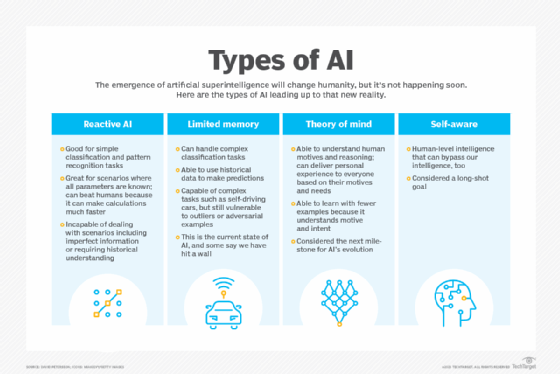Caverion – Fortum continues operation and maintenance partnership with Caverion at hydropower plants in Finland
 Fortum will continue its operation and maintenance partnership with Caverion at 13 hydropower plants in Finland.
Fortum will continue its operation and maintenance partnership with Caverion at 13 hydropower plants in Finland.
Caverion is responsible for the local operation and maintenance of Fortum’s hydropower plants in the Oulujoki, Emäjoki and Vuoksi regions in Finland. In addition, Caverion participates in planning, implementation and commissioning assignments related to renewal and maintenance projects at the plants.
“Our goal is to deliver our customers clean energy and, at the same time, support the functioning of our society’s entire energy system with adjustable hydropower. I am happy that we can continue our collaboration with Caverion to promote these common goals. We also want to challenge ourselves and our partners further to develop the usability, flexibility and in particular safety of maintenance operations,” says Markku Nivalainen, Area Manager for Hydro Asset Operations in Finland at Fortum.
“Long-term and good partnership is a great foundation for developing operations. Together with Fortum, we have completed many actions to improve safety, processes and operations at the plants. For preventive maintenance we offer solutions utilising AI and digitalisation. This helps the plants to operate in the best way possible,” says Elina Engman, Head of Caverion Industry.
Caverion has been responsible for the operation and maintenance of 13 of Fortum’s hydropower plants since 2013.
Background
Fortum’s hydropower plants in Oulujoki and Vuoksi play an important role in the production of renewable and domestic electricity in Finland. Electricity production and consumption must be in balance at all times. Hydropower is Finland’s largest balancing power, accounting for about 70 per cent of daily balancing needs in electricity production. As reserve capacity, hydropower balances other forms of energy production that are weather dependent and ensures the operation of Finnish electricity system in all circumstances.
Source
Caverion
EMR Analysis
More information on Caverion: See the full profile on EMR Executive Services
More information on Mats Paulsson (Chairman of the Board of Directors, Caverion): See the full profile on EMR Executive Services
More information on Elina Engman (Executive Vice President, Caverion Industry, Caverion Corporation): See the full profile on EMR Executive Services
More information on Raimo Ojanen (Vice President, Caverion Finland, Caverion): See the full profile on EMR Executive Services
More information on Fortum: https://www.fortum.com/ + Fortum is a Nordic energy company. Our purpose is to power a world where people, businesses and nature thrive together. We are one of the cleanest energy producers in Europe and our actions are guided by our ambitious environmental targets. We generate and deliver clean energy reliably and help industries to decarbonise their processes and grow. Our core operations in the Nordics comprise of efficient, CO2-free power generation as well as reliable supply of electricity and district heat to private and business customers.
Fortum in numbers – financial figures (2022) – Continuing operations, excl. Russia
- 7,774 Sales, EUR million
- 2,025 Comparable EBITDA, EUR million
- 1,611 Comparable operating profit, EUR million
More information on Markus Rauramo (President and CEO, Fortum): https://www.fortum.com/investors/corporate-governance/leadership-team + https://www.linkedin.com/in/markus-rauramo-ceo-fortum/
More information on Markku Nivalainen (Area Manager for Hydro Asset Operations in Finland, Fortum): https://www.linkedin.com/in/markkunivalainen/
EMR Additional Notes:
- AI – Artificial Intelligence: https://searchenterpriseai.techtarget.com/definition/AI-Artificial-Intelligence +
- Artificial intelligence is the simulation of human intelligence processes by machines, especially computer systems. Specific applications of AI include expert systems, natural language processing, speech recognition and machine vision.
- As the hype around AI has accelerated, vendors have been scrambling to promote how their products and services use AI. Often what they refer to as AI is simply one component of AI, such as machine learning. AI requires a foundation of specialized hardware and software for writing and training machine learning algorithms. No one programming language is synonymous with AI, but a few, including Python, R and Java, are popular.
- In general, AI systems work by ingesting large amounts of labeled training data, analyzing the data for correlations and patterns, and using these patterns to make predictions about future states. In this way, a chatbot that is fed examples of text chats can learn to produce lifelike exchanges with people, or an image recognition tool can learn to identify and describe objects in images by reviewing millions of examples.
- AI programming focuses on three cognitive skills: learning, reasoning and self-correction.
- What are the 4 types of artificial intelligence?
- Type 1: Reactive machines. These AI systems have no memory and are task specific. An example is Deep Blue, the IBM chess program that beat Garry Kasparov in the 1990s. Deep Blue can identify pieces on the chessboard and make predictions, but because it has no memory, it cannot use past experiences to inform future ones.
- Type 2: Limited memory. These AI systems have memory, so they can use past experiences to inform future decisions. Some of the decision-making functions in self-driving cars are designed this way.
- Type 3: Theory of mind. Theory of mind is a psychology term. When applied to AI, it means that the system would have the social intelligence to understand emotions. This type of AI will be able to infer human intentions and predict behavior, a necessary skill for AI systems to become integral members of human teams.
- Type 4: Self-awareness. In this category, AI systems have a sense of self, which gives them consciousness. Machines with self-awareness understand their own current state. This type of AI does not yet exist.


